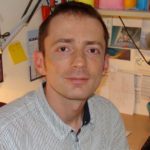Link to Pubmed [PMID] – 21922593
Hum. Mutat. 2011 Dec;32(12):1470-80
A large number of missense mutations have been identified within the tumor suppressor gene BRCA1. Most of them, called “variants of unknown significance” (VUS), cannot be classified as pathogenic or neutral by genetic methods, which complicates their cancer risk assessment. Functional assays have been developed to circumvent this uncertainty. They aim to determine how VUS impact the BRCA1 protein structure or function, thereby giving an indication of their potential to cause cancer. So far, three relevant assays have been designed in yeast and used on large sets of variants. However, they are limited to variants mapped in restricted domains of BRCA1. One of them, the small colony phenotype (SCP) assay, monitors the BRCA1-dependent growth of yeast colonies that increases with pathogenic but not neutral mutations positioned in the Cter region. Here, we extend this assay to the Nter part of BRCA1. We also designed a new assay, called the “yeast localization phenotype (YLP) assay,” based on the accumulation of BRCA1 in a single inclusion body in the yeast nucleus. This phenotype is altered by variants positioned both in the Nter and Cter regions. Together, these assays provide new perspectives for the functional assessment of BRCA1 mutations in yeast.



